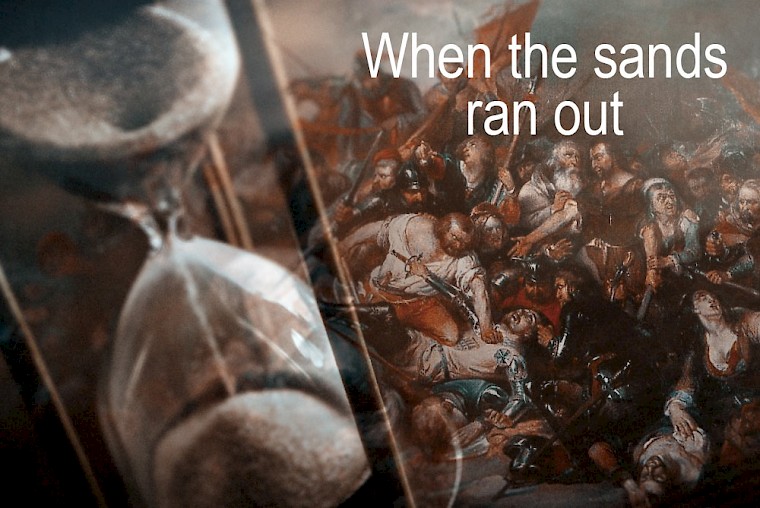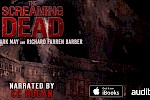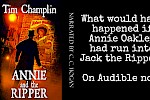Horror might be imagined, but reality can still shock beyond expectations.
Unless your story is completely outrageous, the chances are that when it comes to battles and wars then your characters are going to suffer. I know in this world of first person shooters that there are some who think that blood and gore is fun and exhilarating, but if you have ever spoken to anyone that has been witness to the reality, then that is rarely if ever true.
Death, bloody death, scars the survivors to their very core. It is an emotional rollercoaster of pride and fall and your story after the battle will be a different country than it was before and may leave your characters permanently damaged.
Of course, this not only affects the depiction of the battle and the ensuing heartbreak, but it will echo back to the build up to the battle scene; how long that build up lasts may change the way the reader interacts with the event itself.
There are certain things that should be covered:
- The cast list for the battle and aftermath
- The emotional state of the participants
- Their roles: Are they leaders or cannon fodder, witnesses or relatives
- How expected the battle is, as @melindrea on twitter pointed out
- The importance in the overall storyline, especially if it is going to be a mood changer.
- The graphic nature of the battle and aftermath
In film, there is a very useful tool whenever you want something heart stoppingly dramatic to really bash the audience around the head - silence. You do not need something to be a surprise, you just need to take the audience from low to high. The lower they start, the higher they end up; it is all relative. If you take, for instance, the explosion of a nuclear bomb, everyone can know that it is about to happen, but it will still make them gasp if just before the explosion the soundtrack goes completely silent and the image feels like time has been suspended. How long that pause is will depend on the expertise of the editor; too short and you do not build suspense, but too long and the audience dozes off. Get it right and you will have their full attention.
The same applies to the build up before that moment. A wonderful 1971 film, Le Mans, built up to the start perfectly. From the general chatter of race course, it cut to a sequence where the only sound was a slowly speeding heart beat accompanied by images of expectation from spectators and racers alike. The cutting becomes faster and faster and then stops for several seconds before blasting into the race start. Perfect.
https://www.youtube.com/watch?v=1hfFdowToxY (404)
This sequence is only a couple of minutes long, of course, but the shape and pattern is useful even within a book where the build up might be a chapter or so long and may cover several days of story time.
In my story, one of the main characters is a young woman, only nineteen years of age, who finds herself in a leadership role even though in many ways she is close to being still a child. She has become an accomplished archer, good fighter and rider and she has participated in several small ambushes and little raids where she has witnessed death and killed, though I have not dealt with those incidents in any detailed way.
In this battle, however, she will witness hundreds die. She will experience the point where glorious strategy turns to ignominious butchery. She will be overwhelmed with both the finality and futility of battle, born out of necessity but always ending in grief. And so will everyone else. Battle hardened, in my world, means being able to go back into battle again, it does not mean that the event is like water of a ducks back; no one is left unscarred. This is only book one and this character will suffer many other emotional storylines before the climax of the series and each will leave a scar and she will be changed a little more each time.
Now, I like a good battle and the strategy can be fun, but I am also aware that battles in medieval settings are often rather short. Unless a expend huge numbers of paragraphs on gratuitous violence, the telling of the battle will take little more than a couple of pages. But I want to make those count for something, so this build up becomes very, very important. Like the Le Mans sequence above, I want to explore the characters uncertainties, their planning, their optimism and their actions carefully and use these to build them armour against the blood of war; armour that I can then strip away to expose them to the rawness of reality. I need to make sure that the reader understands and knows the character, not as they may have grown throughout the book, but as they are at the moment before the starting flag falls. If my reader is going to sob in pain with my characters at the end of the battle, I have to take them through the same journey - from pride to fall.
The risk is, however, that I will bore them, that they will lose interest in the character because they know something exciting is going to happen and they want me to get on with it.
This is a particular problem in my pseudo-medieval world. Shifting an army is a long, slow, complicated business. You do not sneak several thousand soldiers up to the walls without people noticing. This is why in history there are so many set piece battles and the use of irregulars was problematical - your enemy had this annoying habit of seeing you coming.
So, if I am to surprise, it is unrealistic to make that a battle happens a surprise, it is better, perhaps, that the surprise is in how the people in the story react to the battle and what are the consequences of the battle.
I suspect that the solution to my problem of timing, how long the build up should be, will be solved in the editing and not the initial draft, but it is a difficult balance and in planning possibly not as enjoyable as other parts of the story. Writing is often like that.





































